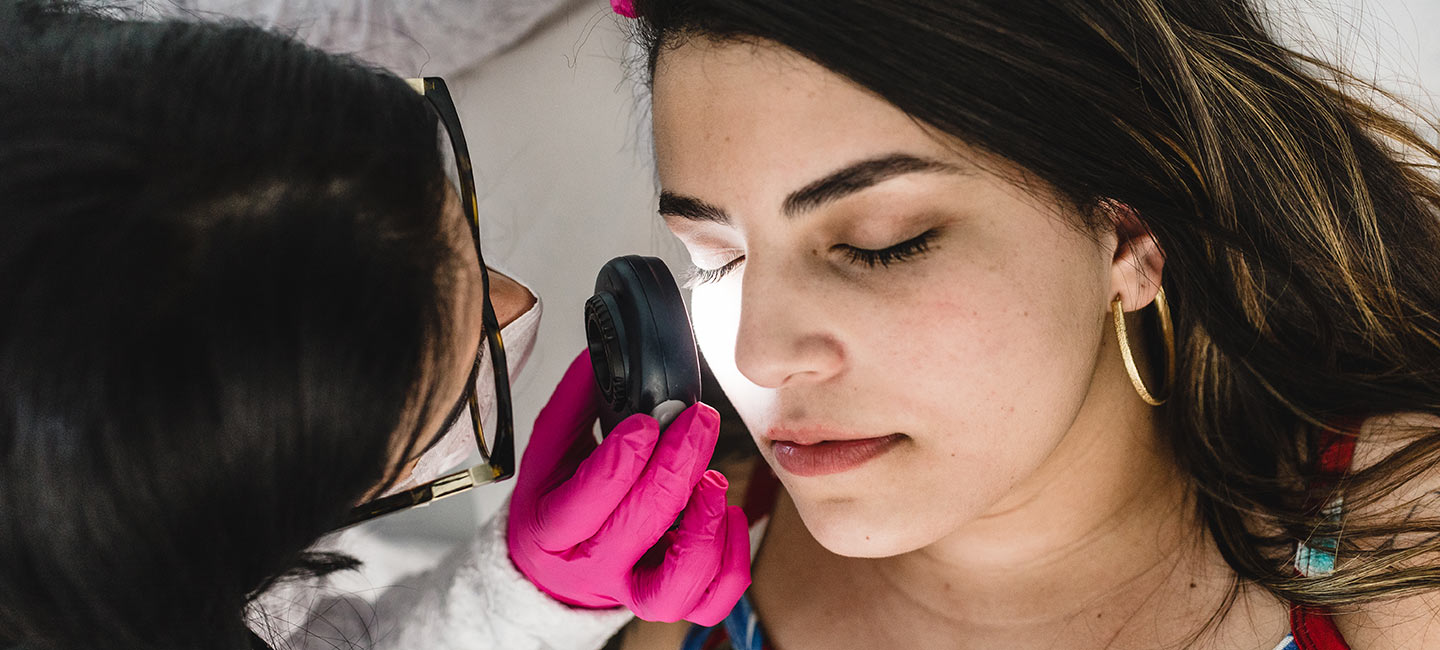Precision Prevention to Reduce Melanoma in Hispanics
Researchers hope an intervention project will help prevent melanoma and other skin cancers in Hispanics who possess certain risk variants of the MC1R gene. The gene plays an important role in skin pigmentation characteristics which place individuals at elevated risk for skin cancers.
Although the incidence of melanoma is lower in Hispanics, a disparity exists because individuals who are Hispanic tend to be diagnosed at later stages of disease and their survivorship is worse compared to white non-Hispanics, noted Dr. Peter Kanetsky, chair of the Department of Cancer Epidemiology at Moffitt Cancer Center. Melanoma is one of the few common cancers still on the rise.
“MC1R variants are robust genetic markers for melanoma, squamous cell and basal cell carcinomas,” said Kanetsky. When individuals inherit certain MC1R variants, they are more likely to have sun sensitivity, more likely to be freckled or redheaded and more likely to not do well in the sun and badly burn. Those characteristics are known to put individuals at elevated risk for skin cancers.
“MC1R also is tied to other biological processes that have nothing to do with skin pigmentation,” said Kanetsky. It is not possible to determine merely by looking at a person’s pigmentation characteristics whether they might carry a variant of the MC1R gene that would place them at risk for skin cancer. “Interestingly, even among individuals with sun-resistant characteristics, such as darker hair, and those who do well in the sun, if they inherit the MC1R variant, that gene variant signature increases melanoma and skin cancer risk. Just because people think they might do well in the sun does not mean they did not inherit a variant of M1CR that places them at increased skin cancer risk.”
Kanetsky’s pilot work has shown thatMC1R risk variants are prevalent in the Hispanic population. With the incidence of skin cancer on the rise in Hispanics, Kanetsky and colleagues set out to see if they could affect change in skin cancer prevention behaviors when sharing risk information with individuals carrying the MC1R gene variant. The ultimate aim of the research is to help prevent skin cancers in this population.
“There are multiple genes important in determining pigmentation, but MC1R is the ‘heavy hitter’ of the pigmentation genes,” said Kanetsky. Building on the science of MC1R gene variants, Kanetsky’s research involves a randomized intervention trial that studies modifiable behaviors in individuals with gene variants. “Our hope is to see change in their implementing modifiable behaviors related to skin cancer prevention.”

The project is possible because of the availability of biosamples obtained from consented patients through Moffitt’s partnership with Ponce Health Sciences University in Puerto Rico. The participants complete a questionnaire to determine baseline measures and important variables on skin cancer prevention behaviors. These questions include average number of hours spent outside on weekday and weekend days, how often one wears sunglasses, wears a hat, applies sunscreen, wears a shirt that protect shoulders, seeks shade when outside, use of tanning machines, whether one goes into the sun for the purpose of getting a tan, number of sunburns experienced and whether the participant has had a skin exam.
Then the researchers process the biosample and obtain the MC1R genotype for each participant. This finding informs whether someone has inherited a higher risk variant, thus putting them at elevated risk for melanoma or whether the participant does not carry such a gene variant which places them at average risk. Within the two groups of people (those at elevated risk and those at average risk) they are randomized.
Group one is told of their inherited risk variant status. “Moreover, the individuals in group one received what could be called precision prevention information,” said Kanetsky. They are advised that the risk is not only related to genetics but also they can help protect themselves by wearing sunscreen, wearing a hat, getting a skin exam and participating in other specified prevention measures.
Group two is not told of the inherited risk genetic variant status and receives some general information from the American Academy of Dermatology with information on specific ways to protect oneself against skin cancer through wearing sun screen, getting a skin exam, etc. After the completion of the study, group two is informed of their MC1R risk status.
The study is halfway completed.
“Ideally, we will find at the end of the study that people in the high-risk group who received precision prevention information informing them that they have the high risk variant along with specific ways to change their behaviors will actually do better than those who receive only general information,” said Kanetsky. “What we want to see in the average risk group after being told they inherited a gene placing them at average risk for skin cancer along with specific ways to change behaviors is that they maintain their prevention behaviors and do not do worse over time.”
Should this intervention project work as hoped, a large proportion of melanomas would be prevented. “Based on our calculations between 10 and 30% of melanomas could be prevented,” said Kanetsky. “It is not possible to remove the exposure of the genetic variant, but we feel we can make a dent in melanoma incidence if those who learn they have the variant as well as those without the variant practice sun safety precautions and get into the habit of checking their skin regularly.”


